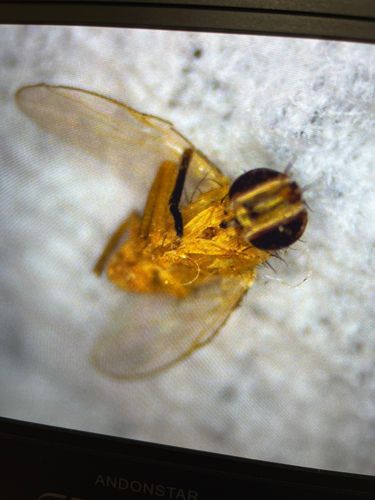Fruit Fly
Scientific Name: Drosophila melanogaster (most common species, though other species exist)
Order & Family: Order: Diptera, Family: Drosophilidae
Size: Typically 2-4 mm (0.08-0.16 inches) in length

Natural Habitat
Commonly found in homes, grocery stores, restaurants, and anywhere there is ripe, rotting, or fermenting fruit and vegetables. They can also be found outdoors in gardens and orchards.
Diet & Feeding
Adult fruit flies feed on fermenting fruits, vegetables, and other organic matter, attracted to the yeast produced during fermentation. Larvae feed on the microorganisms and sugars within the decaying fruit.
Behavior Patterns
Fruit flies are attracted to ripe and fermenting fruits and vegetables. They can lay many eggs in a short period, leading to rapid population growth. They are often seen flying in kitchens or near trash cans where food is present. Their behavior is largely driven by the search for food and suitable breeding sites.
Risks & Benefits
Potential risks include being a nuisance pest in homes and commercial settings, and they can contaminate food with bacteria and other pathogens carried on their bodies. In research, they are extremely beneficial as a model organism (Drosophila melanogaster) in genetics and biological studies due to their short life cycle and ease of breeding.
Identified on: 9/4/2025